Adaptive
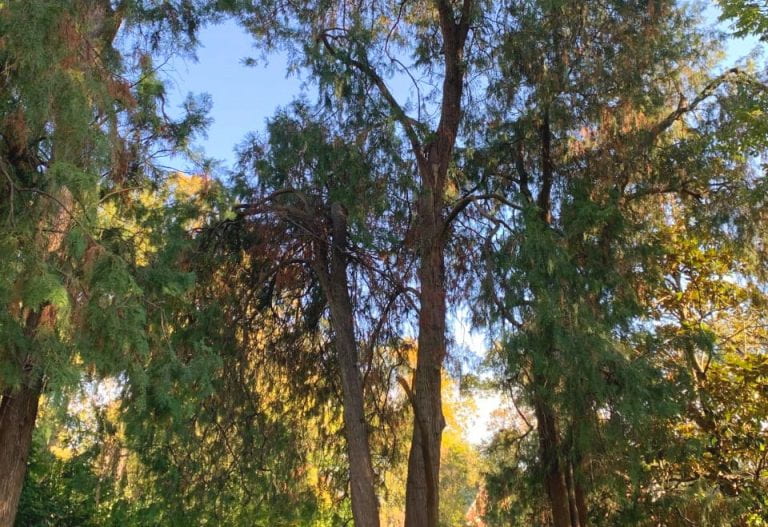
American Arborvitae
Arbor Walk #62, Treekeeper ID #4666
The American Arborvitae is most prevalent in eastern and central Canada, and found in Northern Illinois, Ohio, and New York as well as scattered populations further south. St. Louis is near the southern end of the tree's range, and it benefits from being in a slightly shadier location than they would prefer in their northern ranges.
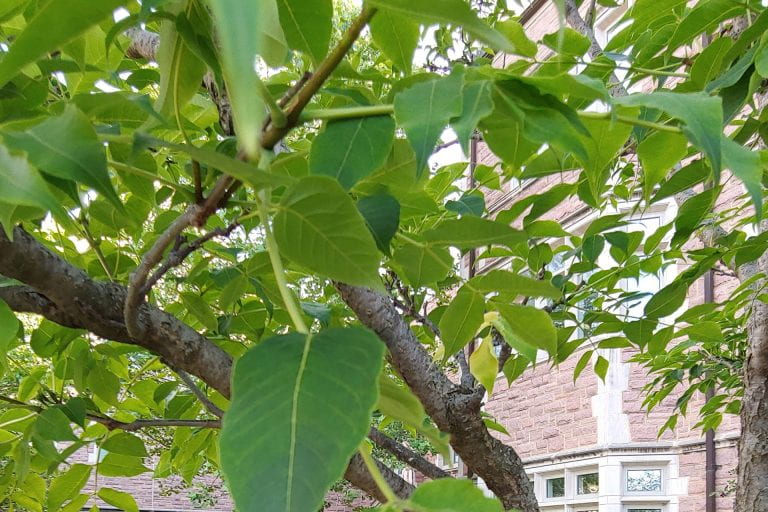
Amur Cork Tree
Arbor Walk #101, Treekeeper ID #1905
The Amur Cork Tree is native to China and Japan. The species is able to tolerate some drought conditions and urban pollutants. They are known for attractive, furrowed bark that resembles cork, as is apparent within its name.
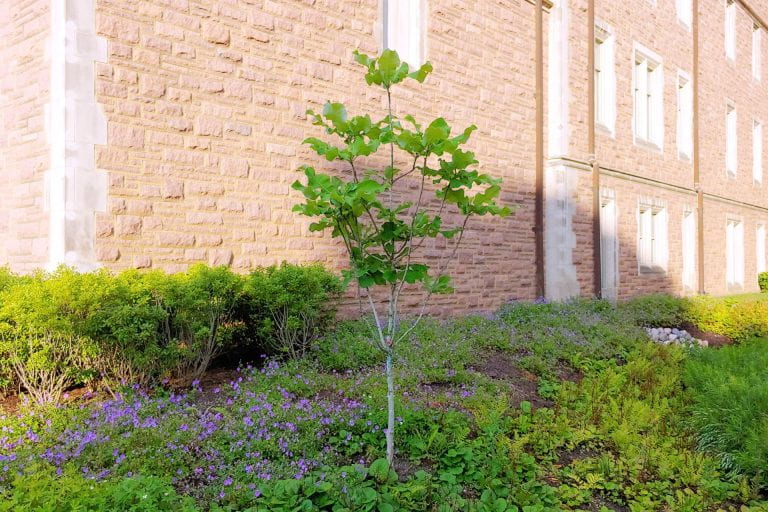
Ashe’s Magnolia
Arbor Walk #92, Treekeeper ID #4775
The Ashe’s Magnolia is a regional native to the Southeastern US and adaptable to the St. Louis Region, typically growing to 10’ to 20’ tall and 10’ to 15’ wide.
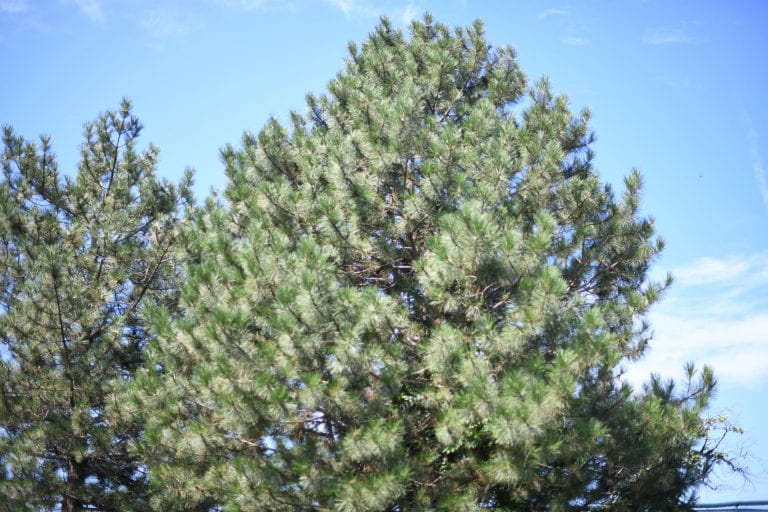
Austrian Pine
Arbor Walk #83, Treekeeper ID #3668
This is a medium to large conifer than is native to Europe and Asia. They are dense and pyramidal when young and round with age. These trees feature spreading branches, stiff, dark green needles in bundles, and oval cones.
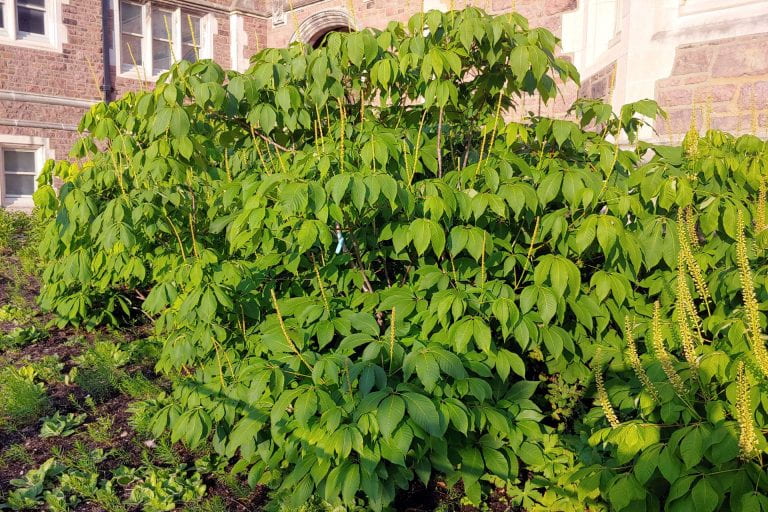
Bottlebrush Buckeye
Arbor Walk #89
Bottlebrush Buckeye is not native to Missouri but is very adaptable to the St. Louis Region. It is a multiple stem understory small tree or large shrub which colonizes by suckering.
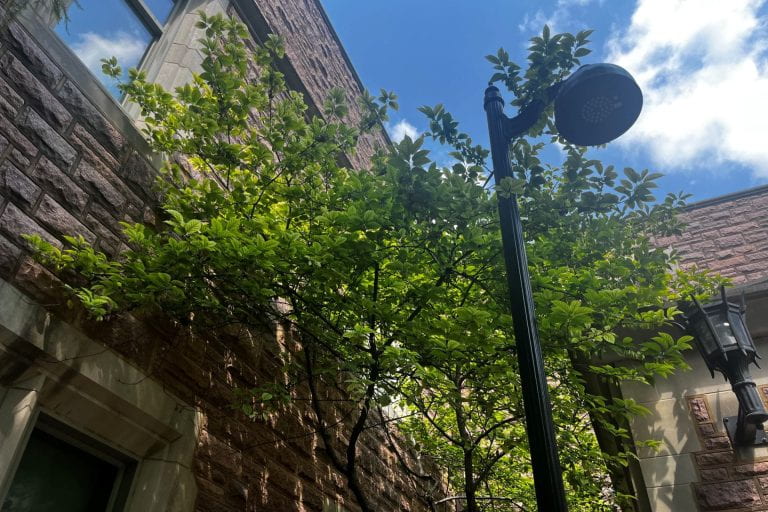
Carolina Silverbell
Arbor Walk #132
The best place to find this plant in the wild is the Great Smokey Mountains where they thrive. Squirrels love the four-winged, dry fruit, and Tennessee beekeepers describe it as a great honey tree. The wood is also sometimes used for cabinets, veneer, and carvings.
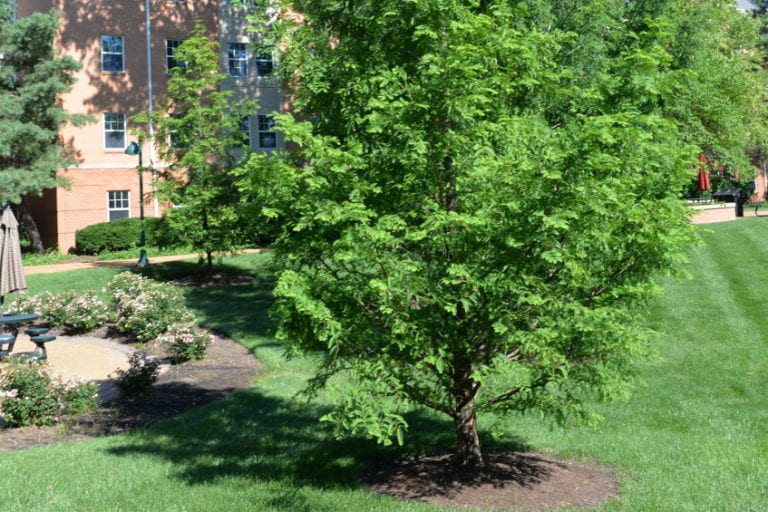
Dawn Redwood
Arbor walk #73, Treekeeper ID #2196
The Dawn Redwood is considered a living fossil because it was only known due to the fossil remains from individuals that lived with the dinosaurs. It was not until the 1940's that a small population was discovered in a remote valley of the Szechwan province of China.
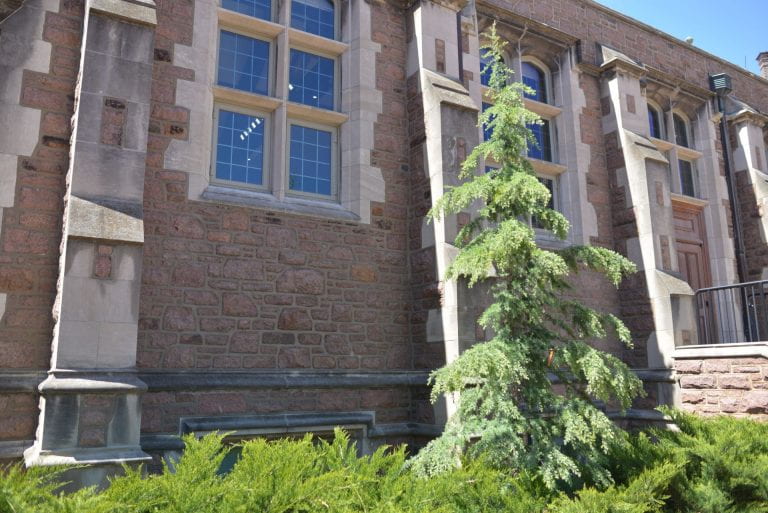
Deodar Cedar
Arbor walk #34, Treekeeper ID #3817
This tree species is originally native to the Himalayas range, but due to its high tolerance to heat for a true cedar, it is able to grow in certain specific conditions in the United States such as the St. Louis area.
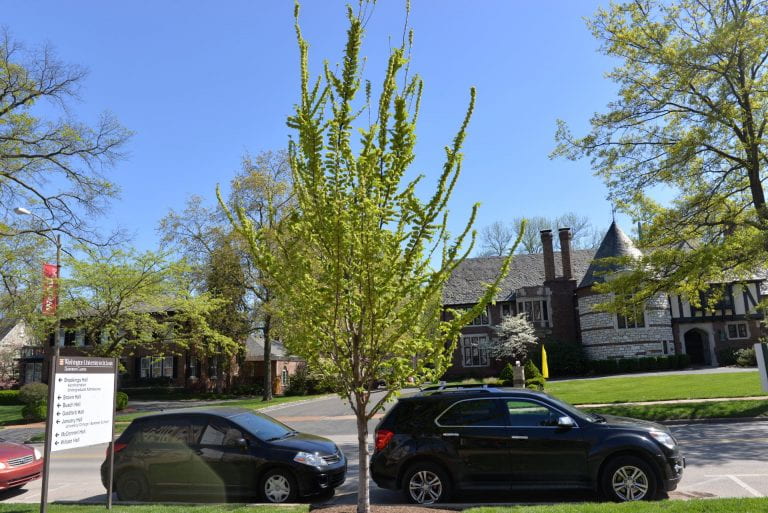
Emerald Sunshine Elm
Arbor walk #52, Treekeeper ID #1676
This Asian hybrid Elm is a relatively small cultivar growing 35 feet high and 25 feet wide. It has glossy green leaves which turn yellow in the fall.
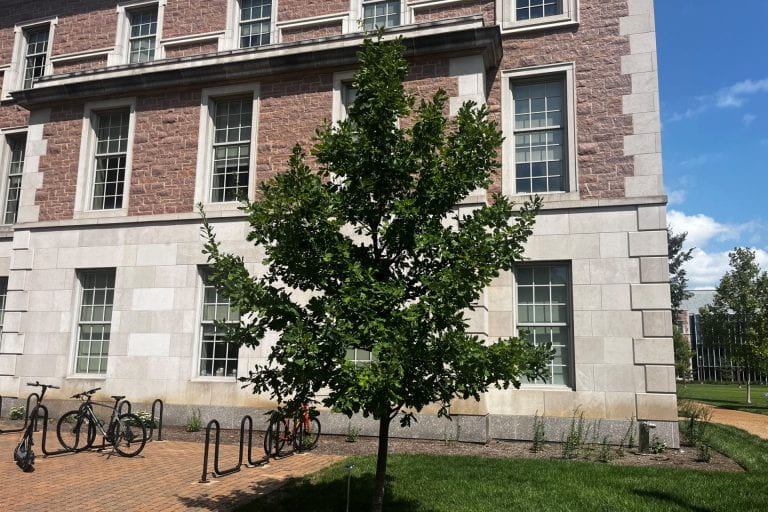
English Oak
Arbor walk #99, Treekeeper ID #6570
English Oak is native and found in mixed woodland areas and planted widely in North America since the 1600s. It has long been a timber source in England.
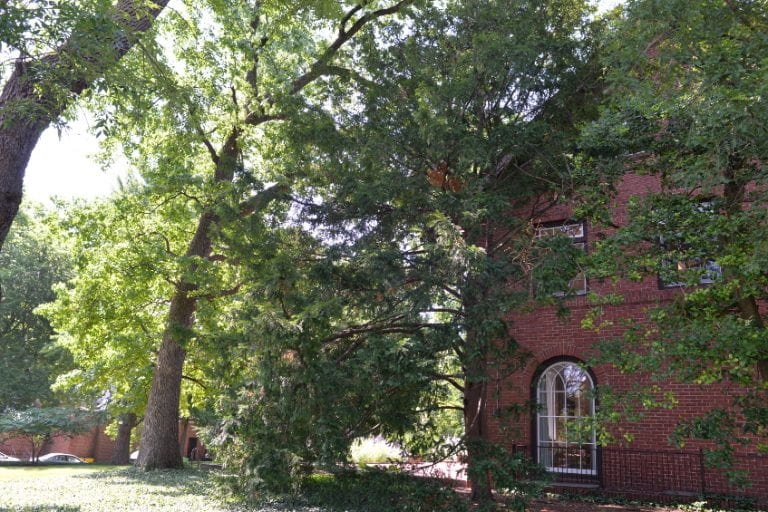
English Yew
Arbor walk #65, Treekeeper ID #5329
Though associated with England, this tree is actually native to all of Europe, as well as southwestern Asia and Northern Africa. Red-brown scaly bark and evergreen dark green foliage ensures this tree is an attractive addition to landscapes year-round.
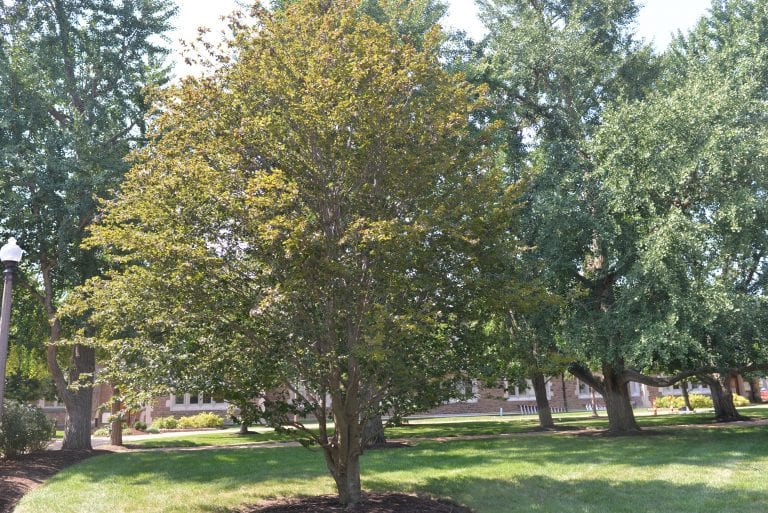
European Beech
Arbor walk #14, Treekeeper ID #1691
This beautiful non-native tree is adaptable to the Midwest. It has golden bronze leaves in the fall and its bark has a gray, elephant-hide appearance.
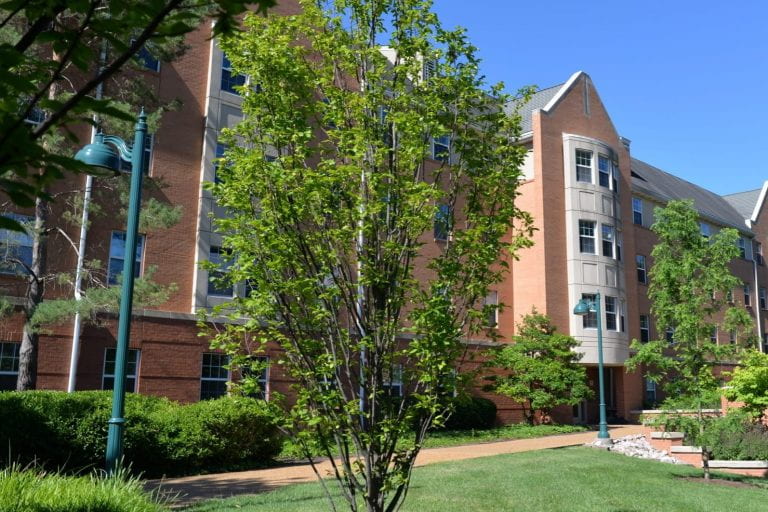
European Hornbeam
Arbor walk #74, Treekeeper ID #2259
This adaptive species is often grown as a shield or hedge plant in urban settings, as it grows a thick canopy that extends most of the way to the ground.
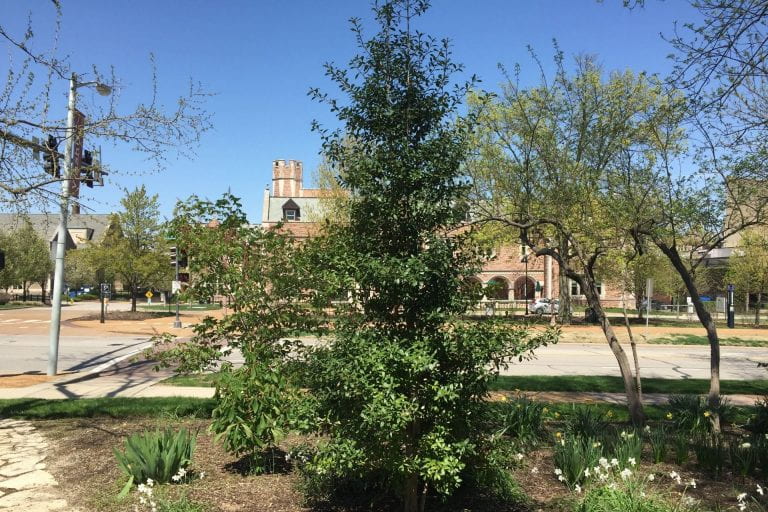
Foster Holly
Arbor walk #39, Treekeeper ID #4373
A naturally occurring hybrid species of American Holly and Dahoon Holly, it was found growing in the wild in Florida in 1924. This is a broadleaf evergreen tree of small to medium stature that prefers well-drained, slightly acidic soil and dislikes extreme hot and cold temperatures.
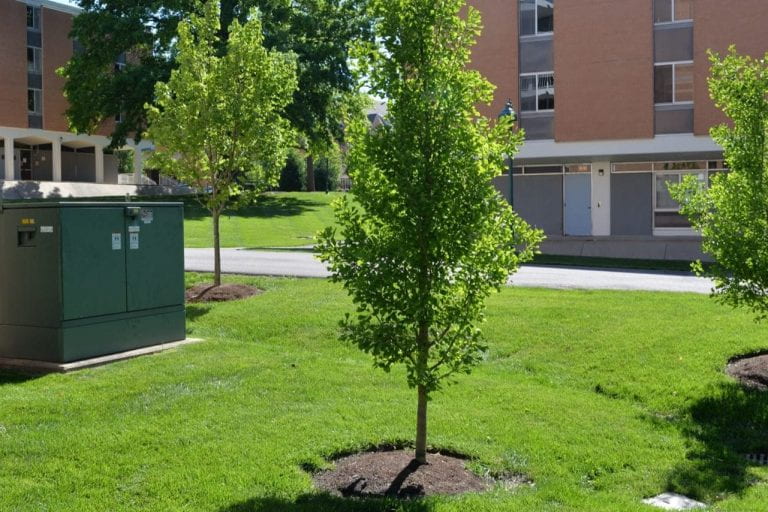
Ginkgo
Arbor walk #76, Treekeeper ID #5991
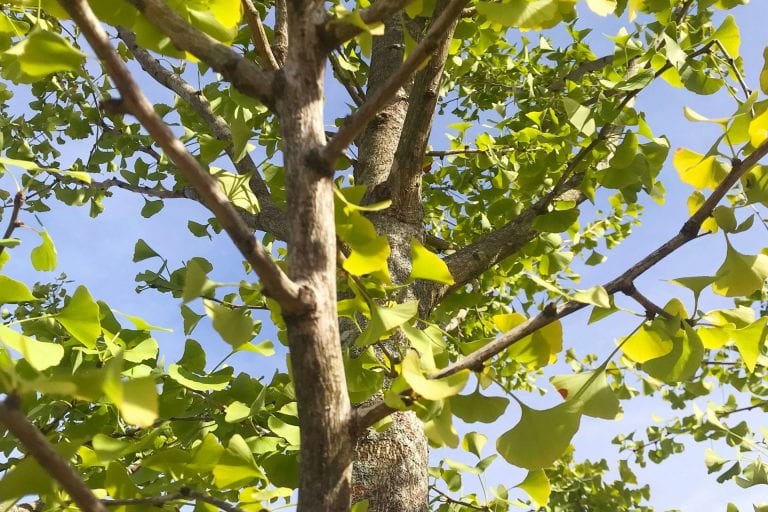
Ginkgo
Arbor walk #96, Treekeeper ID #5779
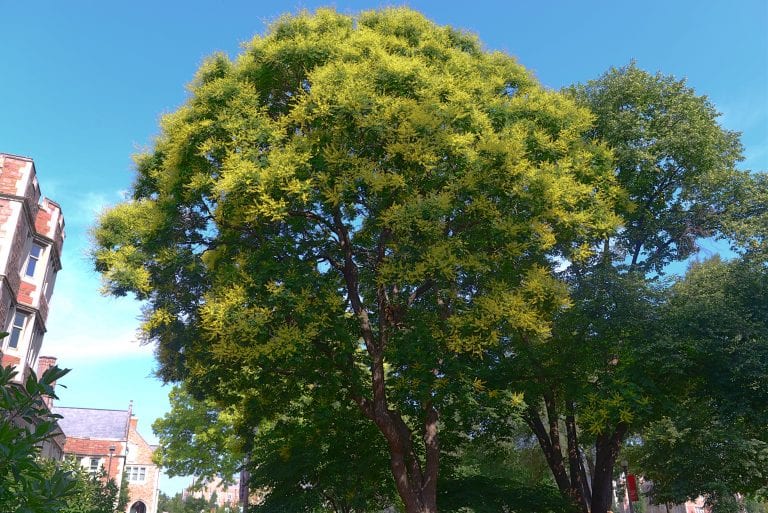
Golden Raintree
Arbor walk #24, Treekeeper ID #3978
This tree's unique foliage, summer blooming yellow flowers, and lantern-like fruit make it one of the most interesting trees in the campus forest.
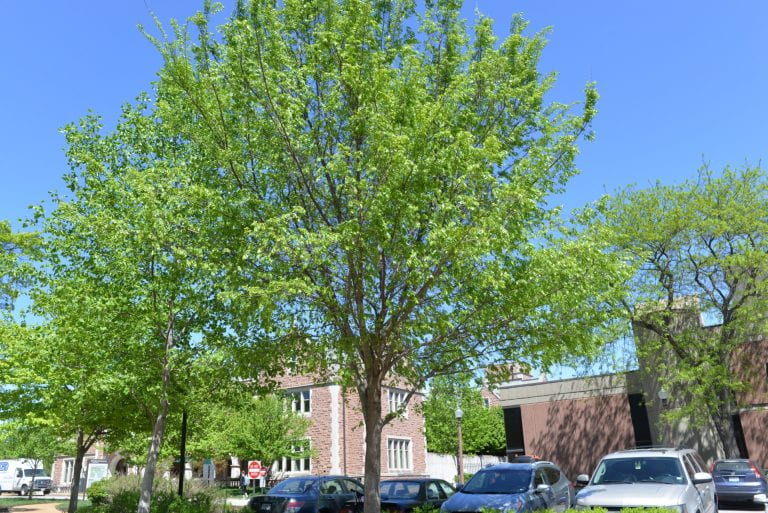
Hybrid Elm
Arbor walk #44, Treekeeper ID #2942
This medium-sized tree is hardy and tolerant to drought, heat, and poor soil which make it well suited as a replacement for the many elms used residential landscapes and city streets.
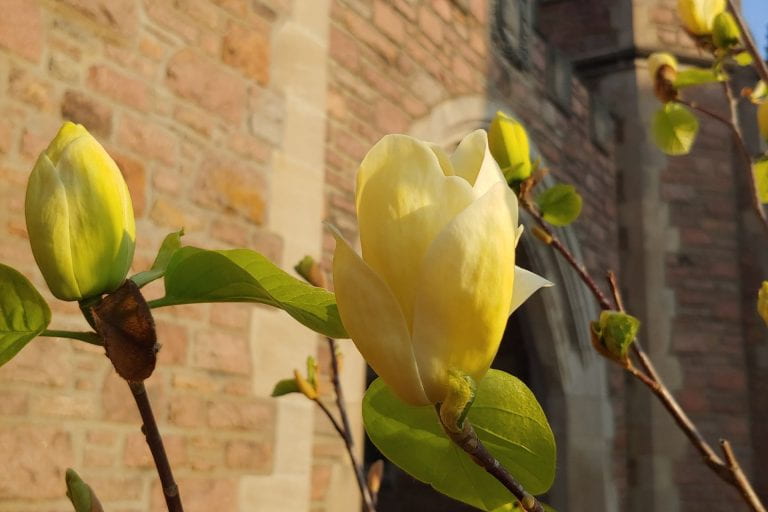
Hybrid Magnolia
Arbor walk #90, Treekeeper ID #5902
Magnolia 'Lois' is adaptive to the St. Louis region and was introduced in 1998 by the Brooklyn Botanical. It flowers in the Spring with a true pale yellow color and it grows to 30' tall and 20' wide.
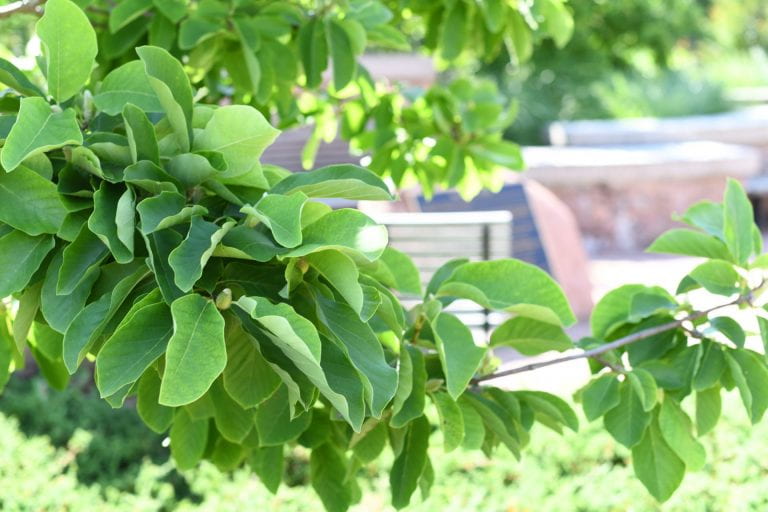
Hybrid Magnolia
Arbor walk #82, Treekeeper ID #3854
This is a deciduous hybrid magnolia resulting from a cross between M. acuminata and M. denudata. It is notable for its yellow flowers, late vegetative growth, compact pyramidal form, and ability to withstand both heat and cold.
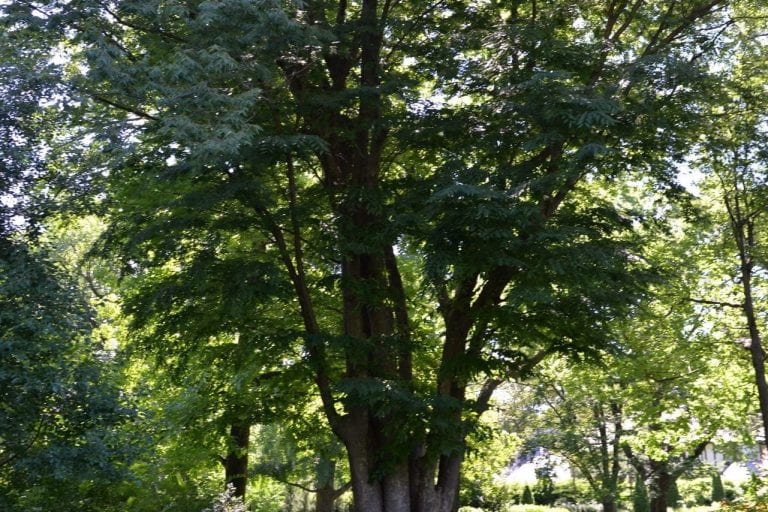
Japanese Zelkova
Arbor walk #59, Treekeeper ID #5340
A member of the Elm family which has been promoted as a replacement to American Elms because of its high degree of resistance to Dutch Elm Disease.
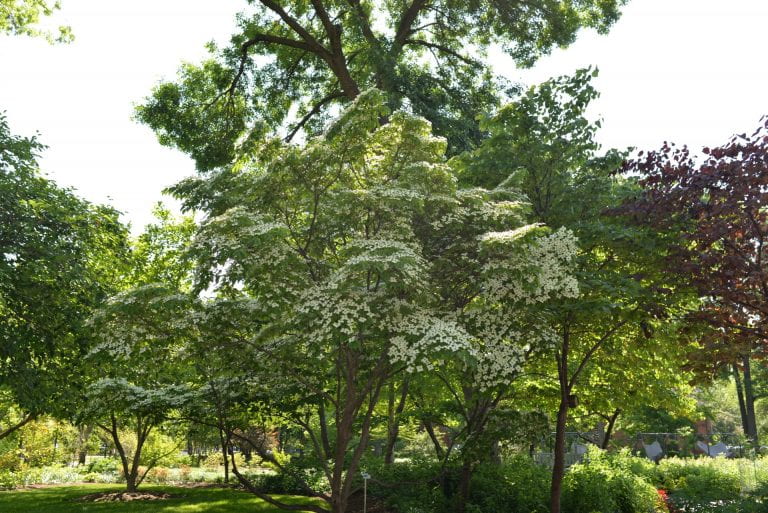
Kousa Dogwood
Arbor walk #41, Treekeeper ID #4568
This tree, native to Asia, is known for its four-petaled white flowers in June and its reddish-purple color in Fall.
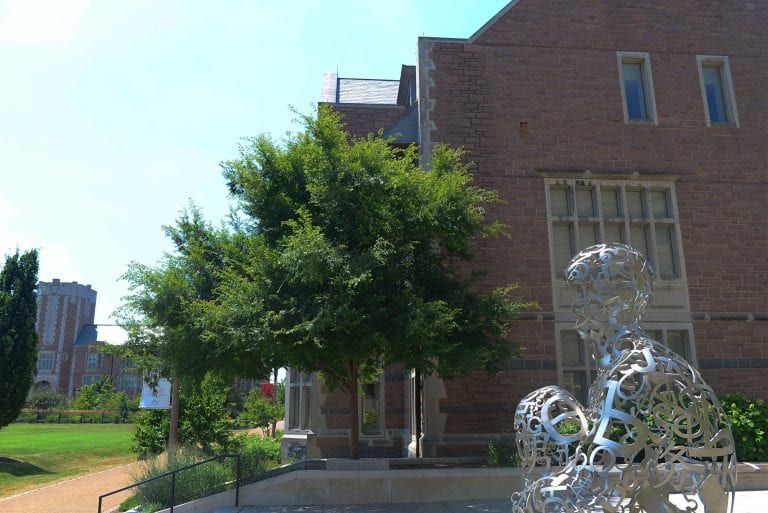
Lacebark Elm
Arbor walk #5, Treekeeper ID #3495
The Lacebark Elm is a large elm native to China that is known for its intricate bark and durable wood. It has strong resistance to the deadly Dutch Elm Disease, making it an ideal planting or hybridization target.
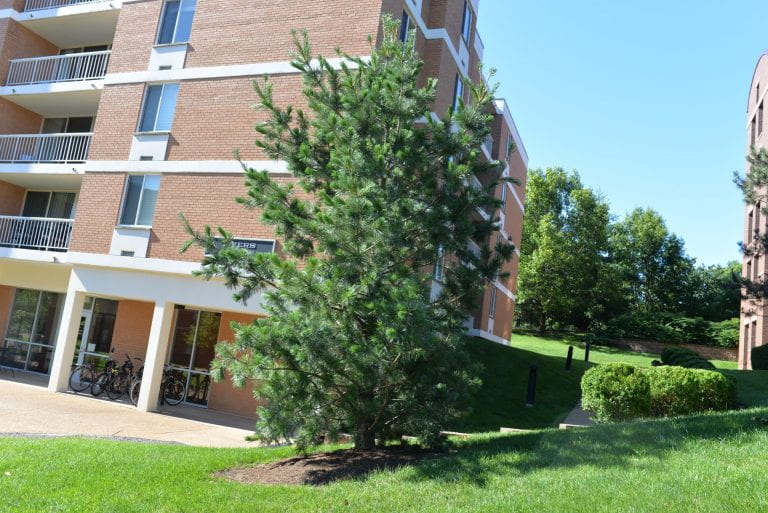
Limber Pine
Arbor walk #72, Treekeeper ID #3697
This under-used pine, native to the western United States, is more tolerant of alkaline soils than the Eastern white pine. The dark blue green needles help this tree stand out in the landscape.
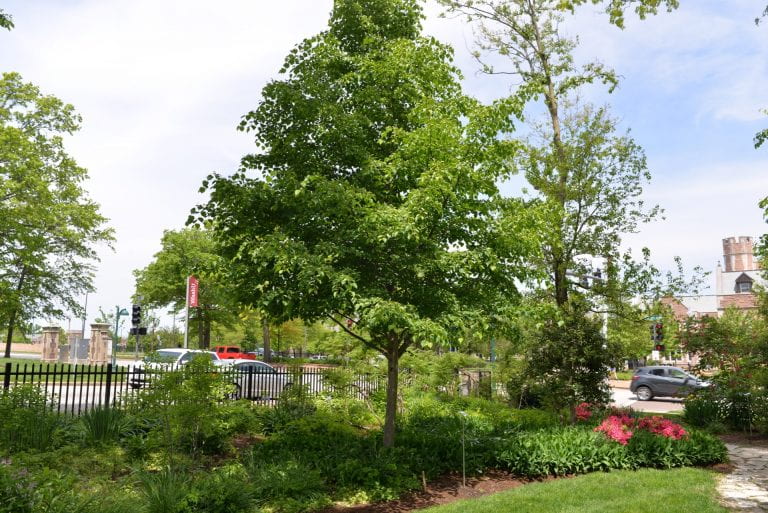
Littleleaf Linden
Arbor walk #42, Treekeeper ID #4386
The Little-Leaf Linden is uniquely adept at withstanding polluted environments, and is therefore a great shade tree for urban settings. It is a native to Europe and exists in the wild only in protected pockets of land, where it provides ecological benefits for moths and pollinators.
Loblolly Pine
Arbor Walk #126
The Loblolly Pine is an iconic tree in the Southeastern United States, dominating the southern pine forests and being grown for lumber in plantations in the region. It is tall, skinny in shape, and a vigorous grower.
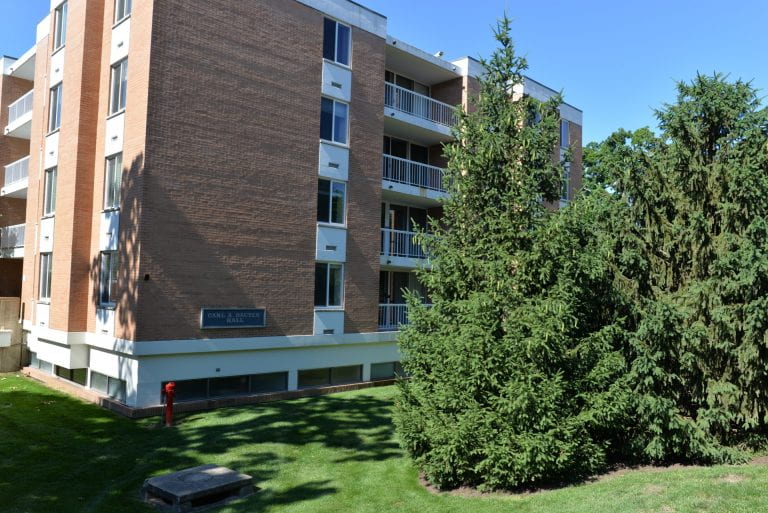
Norway Spruce
Arbor walk #77, TreeKeeper ID #2644
This European spruce is often planted in temperate regions of the United States as a wind blocker, as it can grow quickly and reach an average height of 60 feet in artificial habitats. The tree’s early branches are tilted upwards, but over time the branches adopt a more open and perpendicular stance.
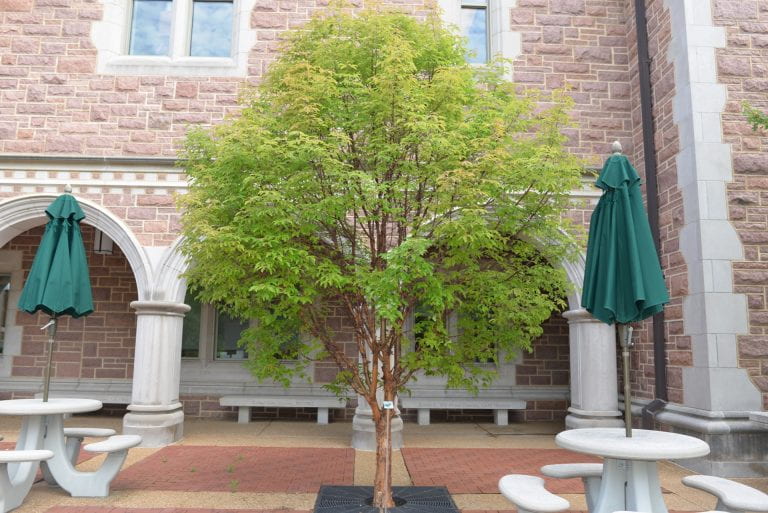
Paper Bark Maple
Arbor walk #36, TreeKeeper ID #3160
A type of maple originally native to the mixed forests of Central China, this species was introduced to the West through England in 1899 and transplanted to America soon after.
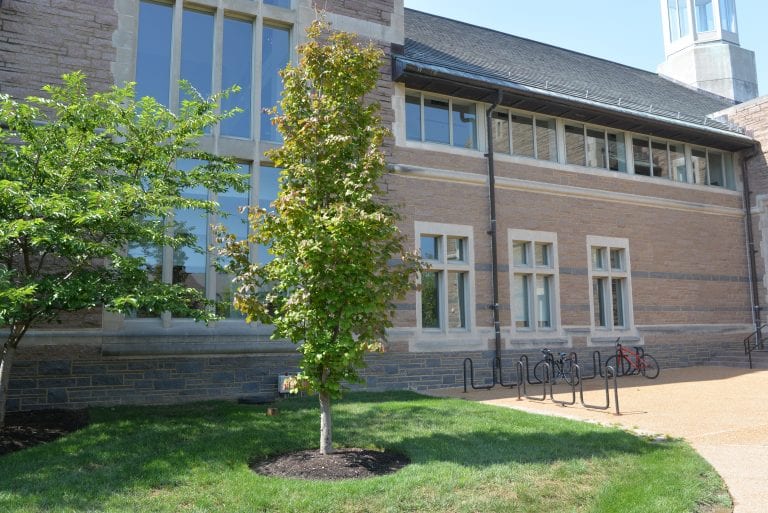
Persian Parrotia
Arbor Walk #1, Treekeeper ID #2642
Also known as the Persian ironwood, the Persian Parrotia is known for its exfoliating bark which is particularly noticeable in the winter. When young, its leaves are reddish purple, and as it matures they will become dark green in the summer and yellow, orange, and red in the fall.
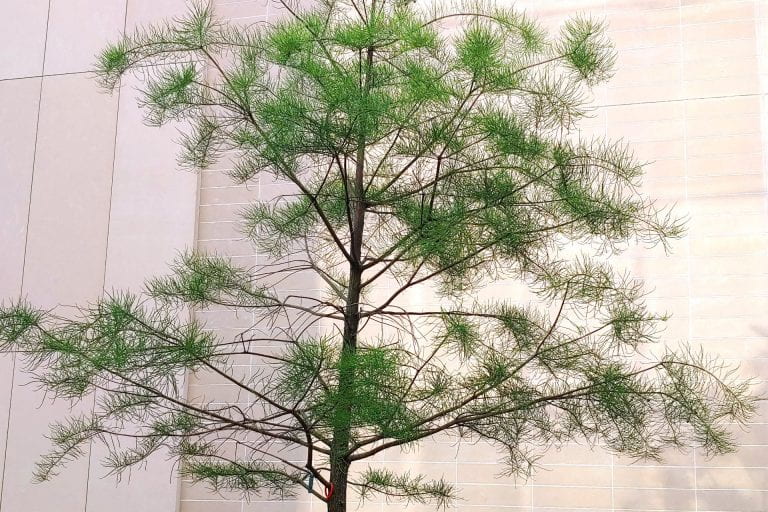
Pond Cypress
Arbor Walk #95, TreeKeeper ID #5772
Native to the southeastern U.S., the Pond Cypress is a member of the Taxodens genus. It has deeply furrowed barks and slender needles that emerge from erect shoots.
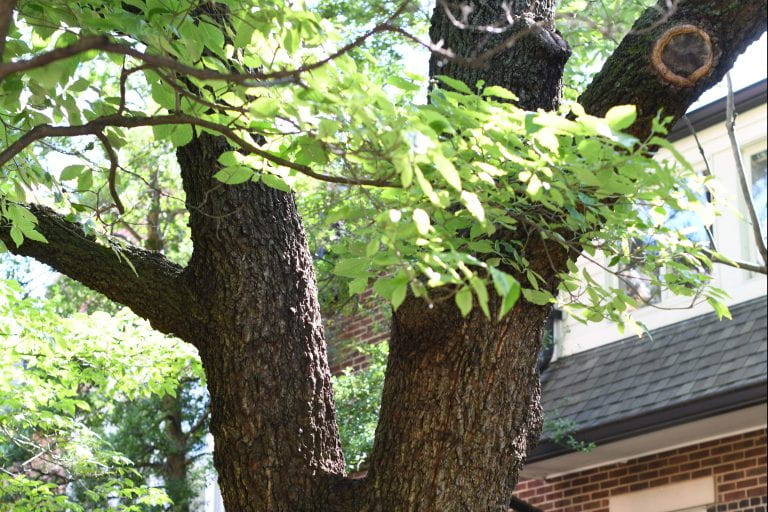
Sawtooth Oak
Arbor Walk #80, TreeKeeper ID #3239
The Sawtooth Oak is a medium sized deciduous tree, growing 40-60 feet tall with a broad-spreading, rounded crown. It is native to China, Korea and Japan and grows yellow-green flowers and oval acorns with spiny, scaly cups.
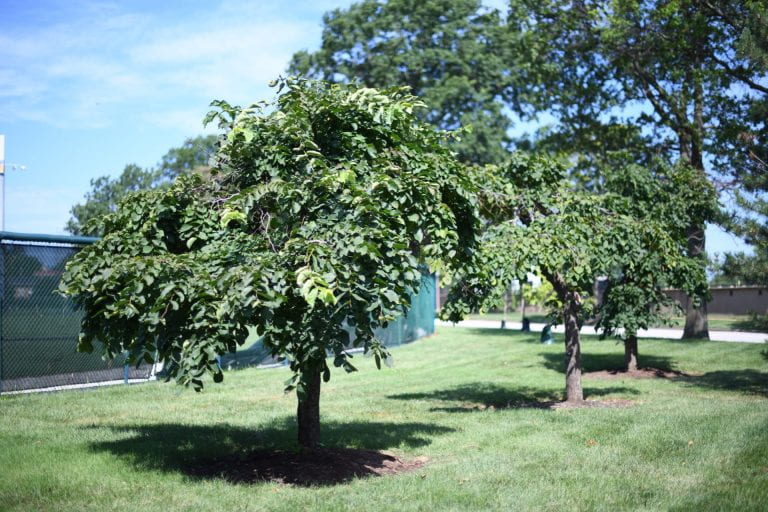
Scotch Elm
Arbor Walk #84, Treekeeper ID #3382
This cultivar of the Scotch Elm, known as the Camperdown Elm, is a large deciduous tree with a rounded crown and bowing, drooping branches. While the wild-type Scotch Elm may reach 70'-100' in height, the Camperdown Elm will not grow above 30' tall.
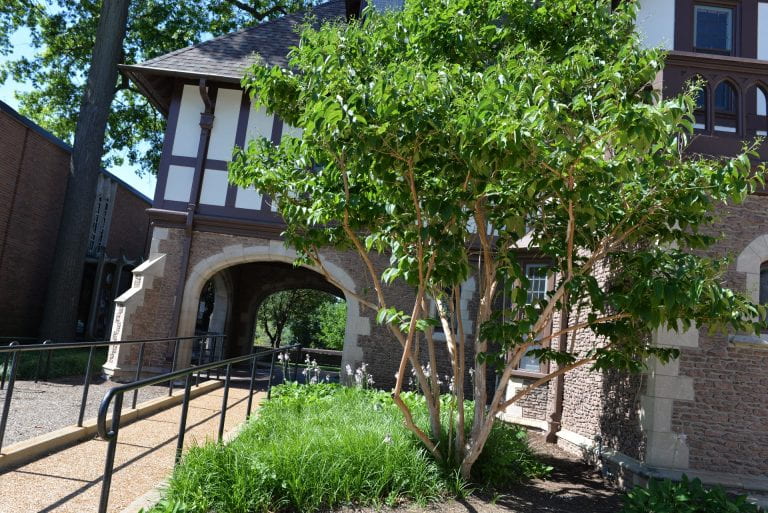
Seven-Son Flower
Arbor Walk #66, TreeKeeper ID #2585
The Seven-Son Flower is a large deciduous shrub with a fountain head that terminates in creamy white flower clusters. This plant is native to China, and provides a good source of nectar for butterflies.
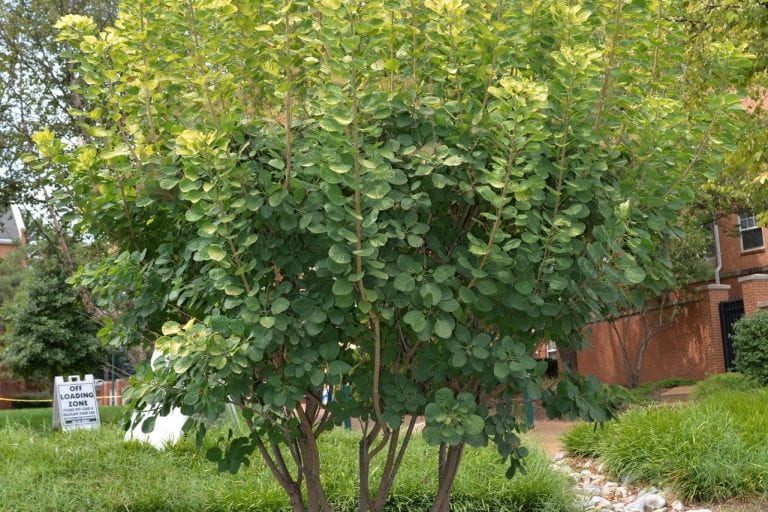
Smoke Tree
Arbor Walk #75, TreeKeeper ID #2753
This small 10-15 foot Eurasian tree is best known for the show it puts on annually; smoke trees produce pink to purple hair-like strands that emerge from its flowers each summer, appearing to be a “smoke” that covers the tree.
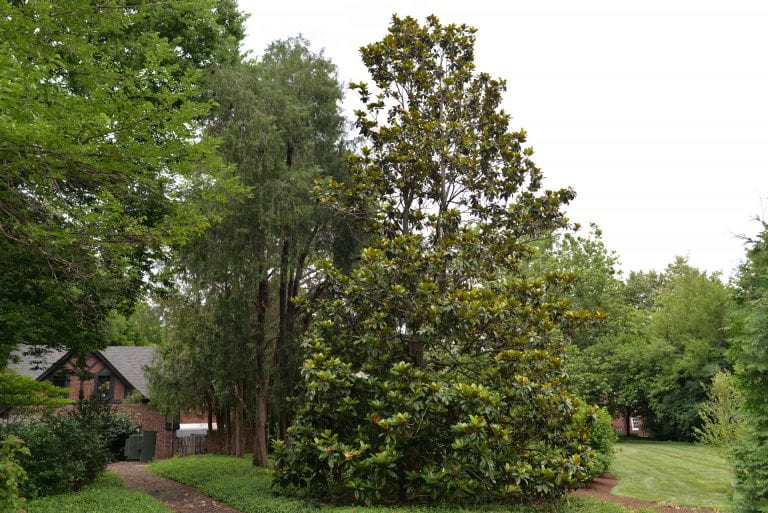
Southern Magnolia
Arbor Walk #63, TreeKeeper ID #4685
The Southern Magnolia, known for its fragrant late-springtime flowers, is one of the most characteristic native trees of the American South. The tree's most distinctive feature is its leaves—glossy dark green on top and a soft pale green below.
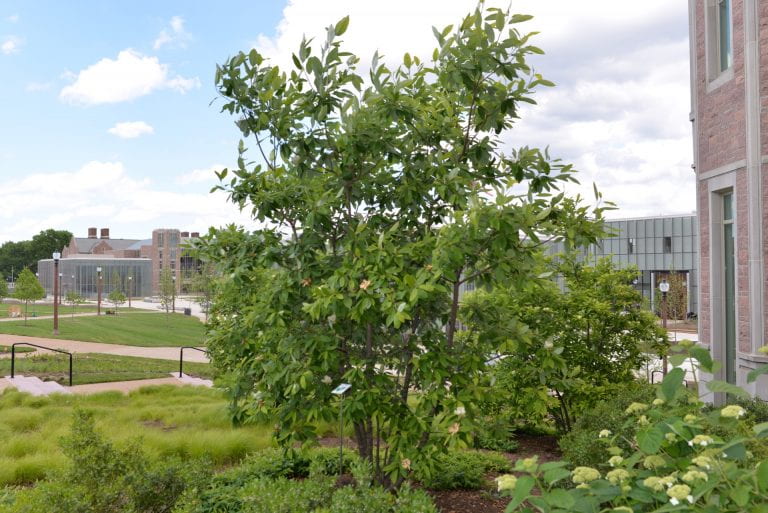
Sweetbay Magnolia
Arbor walk #57, Treekeeper ID #2063
Native to the Atlantic coast of the United States, the Sweetbay Magnolia MOONGLOW features creamy white flowers which bloom late spring and into summer, and are known for their sweet 'lemony' scent.
Three-Flowered Maple
Arbor Walk #100, Treekeeper #6600
Three Flowered Maple is a small understory tree and grows to 30' tall. Features of this tree include exfoliating bark and fall color of orange to red foliage.